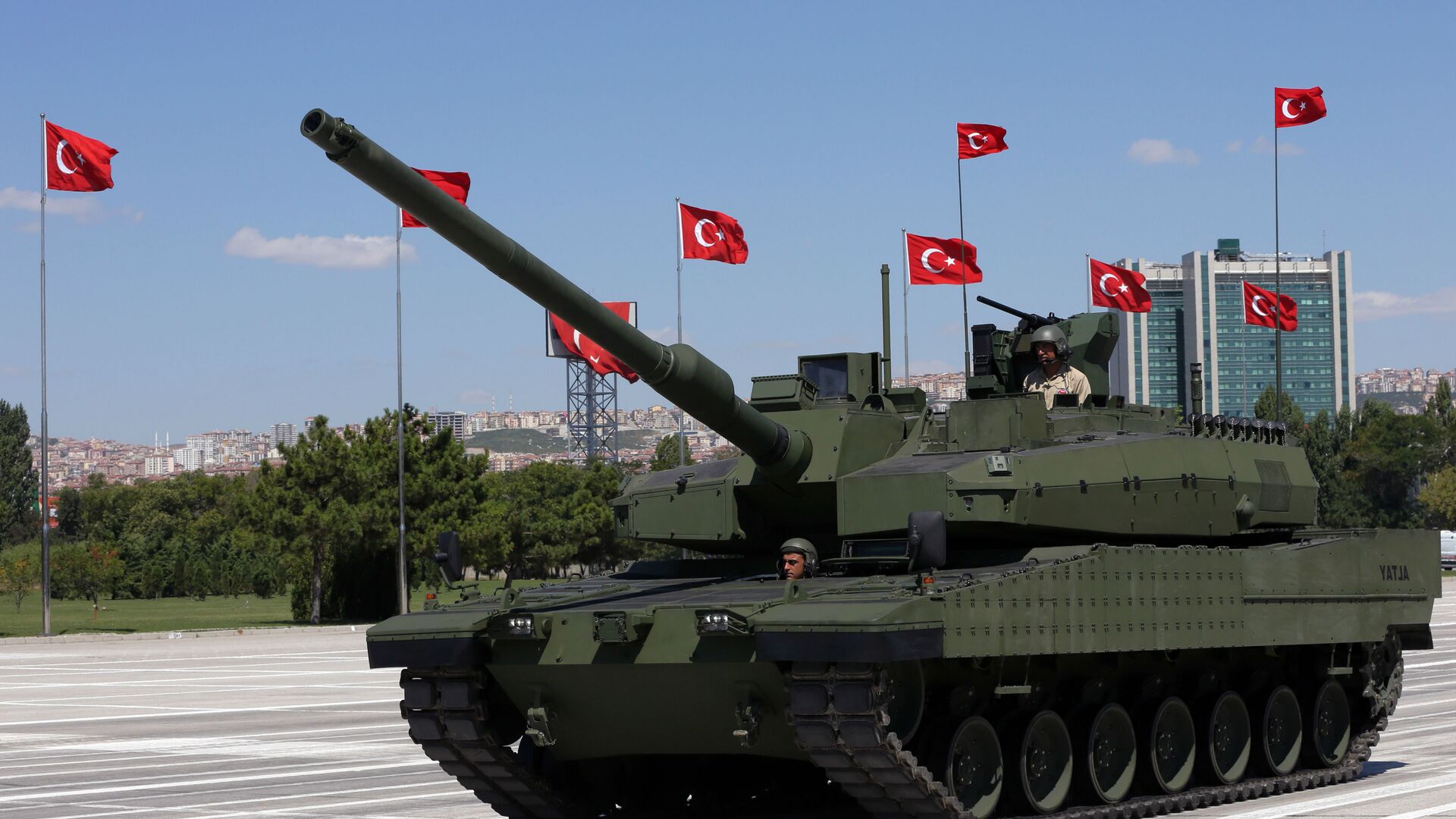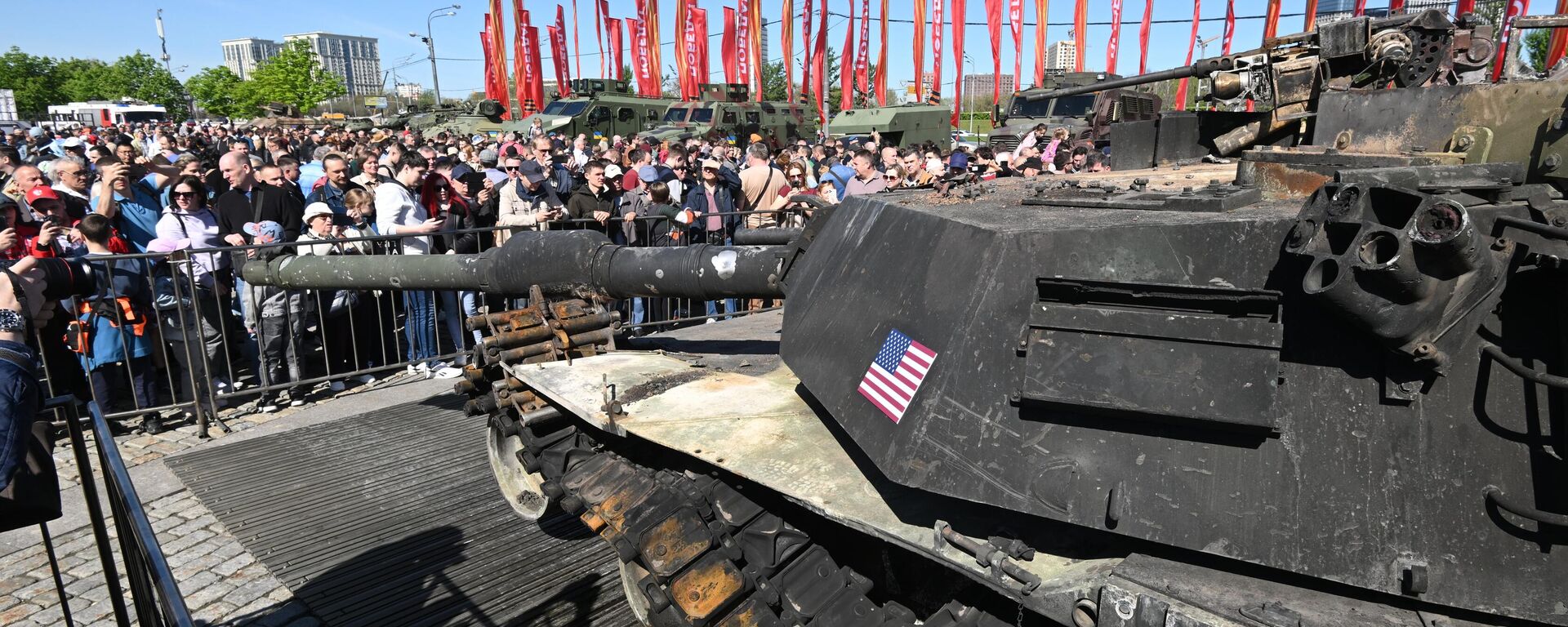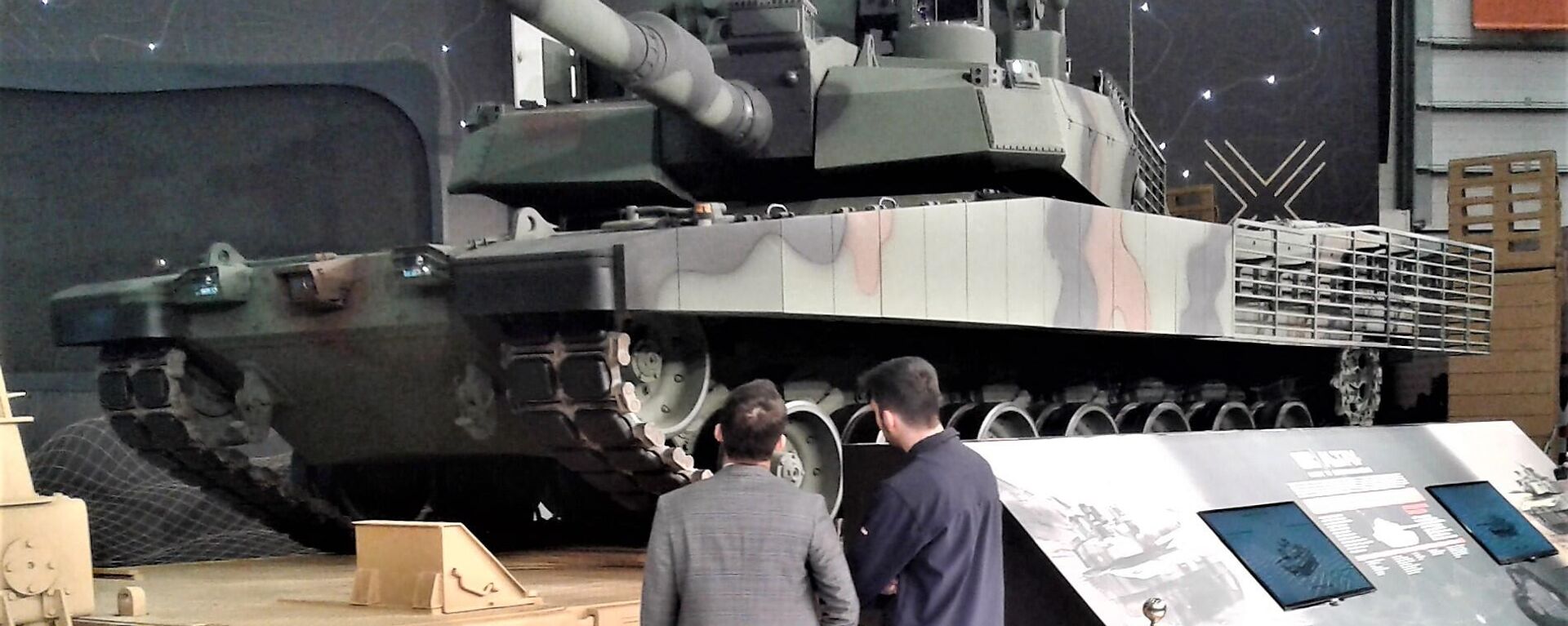Turkiye’s First Foray Into Tank-Building: What We Know About the Altay MBT

© AP Photo / Burhan Ozbilici
Subscribe
Spending most of its modern history relying on Western main battle tank designs, Turkiye began to explore the production of a domestic heavy armored platform in the late 2000s, as part of a broader push to increase the self-sufficiency of its military-industrial complex.
Turkiye’s Defense Industry Agency recently announced the start of mass production of the new Altay main battle tank. Here's what we know about the tank and its stated capabilities.
Designed between 2008 and 2016 by Turkish defense and automotive giant BMC Otomotiv with help from Turkish companies Aselsan, MKEK, Roketsan, and Havelsan, and with major assistance from South Korea’s Hyundai Rotem, Hyundai WIA, Samyang Comtech and Poongsan Corporation, the Altay is Turkiye’s K2 Black Panther-derived vision of a fourth-generation MBT. The technologies in the tank are estimated at about 60 percent South Korean, but Turkiye plans to increase the percentage of domestic technological solutions over time.
The Altay is a behemoth of an armored vehicle, weighing in at 65 tons, comparable to the US M1 Abrams. The MBT is 7.3 meters long (10.3 m if counting its gun when faced forward), 3.9 m wide and stands 2.6 m tall. This means plenty of room for its four-person crew, ammunition and fuel reserves, but also makes it potentially vulnerable to enemy anti-tank and drone attacks, as the Ukrainian conflict has amply demonstrated.
The Turkish tank is equipped with South Korean-designed composite armor and Aselsan AKKOR active protection.
The MKE 120 mm laser-guided smoothbore gun is the tank’s main armament. The gun does not have an autoloader. Secondary weapons include a 7.62 mm coaxial machinegun and a machinegun-armed remote controlled weapons station with automatic target tracking.
The Altay is powered by a Hyundai 12-cylinder water-cooled 1,500 horsepower diesel engine. A homegrown engine by BMC is in the works. Turkiye flirted with the purchase of Ukrainian tank engines produced by the once-legendary Kharkov Malyshev Plant, but scrapped the idea in late 2021.
The Turkish tank has a stated on road/off road performance of 70 and 45 km per hour, respectively, and an operational range of 450 km before refueling. The tank is designed to be able to handle a 60 percent gradient, and ford rivers up to 4 meters deep with special equipment, or 1.2 meters without special equipment.
Turkiye expects to build the first batch of 250 Altays in 2025. The tanks have an estimated unit cost of $13.75 million. The long-term cost of the program is expected to reach $40 billion or more.
Before building the Altay, Turkiye spent decades relying on American M48 and M60 tanks, and West German Leopard 1 and Leopard 2 MBTs. The latter proved highly vulnerable to portable anti-tank missiles used by militants in southern Turkiye. Turkish Defense Industry Agency chief Haluk Gorgun has assured that the Altay’s design has been upgraded "in accordance with the conditions of the modern combat environment."



